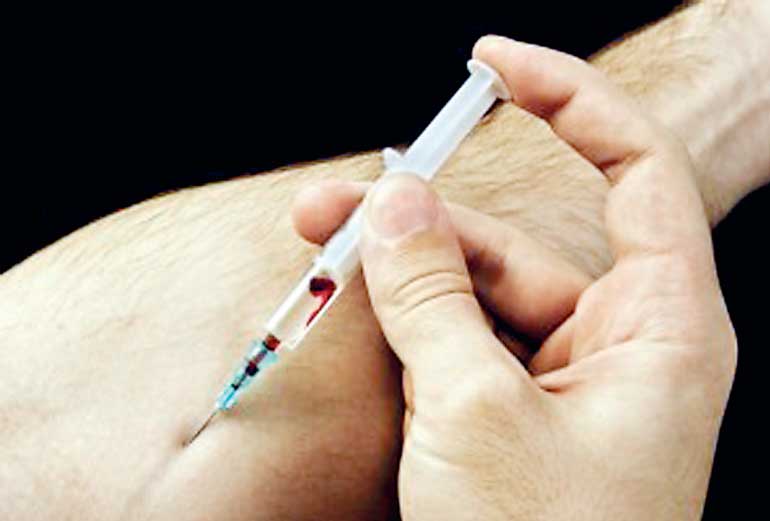Monday Dec 08, 2025
Monday Dec 08, 2025
Thursday, 30 July 2015 00:00 - - {{hitsCtrl.values.hits}}

By Hishan Welmilla
According to newly-published data from the World Anti-Doping Agency (WADA), the Adverse Analytical findings (AAFs) in Olympic sports declined by nearly 16% last year to 1,440, equivalent to around four per day.
This figure is quite remarkable as the figure recorded in 2014, the second consecutive annual fall, is contained in a WADA report on all tests analysed by WADA-accredited laboratories in 2014 and entered on its Anti-Doping Administration & Management System (ADAMS).
All though the figure indicated brings somewhat satisfaction the critics has raised two questions – does this decline mean that fewer athletes in Olympic sports are attempting to use drugs to gain an illicit edge, or does it rather reflect that those who do are getting better at evading detection?
What one can say is that the year-on-year decline in AAFs in non-Olympic sports was less pronounced, at just under 6%.
It also appears to be the case that, from the more than 6,000 human growth hormone tests conducted in blood, just one AAF, at the laboratory in Warsaw, was recorded.
Further according to the report, the proportion of AAFs and atypical findings (ATFs) among the 186,723 Olympic sports samples analysed stood at 0.99%.
Once non-Olympic sports and non-ADAMS data, such as that obtained in North American professional sports leagues, was taken into account, the overall rate of AAFs/ATFs rose to 1.36%.
Among WADA-accredited laboratories reporting in ADAMS, much the highest proportion of AAFs to samples analysed – 3.26% – was recorded in Mexico City. The second place goes to Barcelona, more than a full percentage-point lower at 2.22%, followed by New Delhi with 2.13%, Ghent 2.08%, Bloemfontein 1.97% and Sochi 1.96%.
The data also reveals rather surprisingly that, after rising sharply since 2010, the number of Athlete Biological Passport (ABP) samples analysed in 2014 fell by 4%, or just over 1,000, to 22,849.
Cycling is far more active in this sphere of doping control than any other Olympic sport.
No fewer than 46% of all ABP samples in Summer Olympic sports analysed in 2014 were in cycling, one of the sports most plagued by high-profile drug cheats in recent times. Fully 56% of ABP samples by International Sports Federation were accounted for by the International Cycling Union (UCI).
Second on this list with 11% was the International Ski Federation (FIS), whose sport accounted for 53% of ABP samples analysed in Winter Olympic sports. According to the statistics, only 20 International Federations, including four non-Olympic International Federations, took any ABP samples at all.
Among National Anti-Doping Organisation, the Russian body, RUSADA, accounted for 13% of ABP samples taken.
Even though the reports revealed a drop, World Anti-Doping Agency Director General David Howman. Says more than 10% of elite athletes could be using performance-enhancing drugs as reported by BBC Sport.
Former Wada President Dick Pound has previously said that four out of five cheats are not being caught and Howman said he was concerned there might still be riders doping at this year’s Tour de France after former winner Lance Armstrong was stripped of seven titles following his admission he took performance-enhancing drugs.